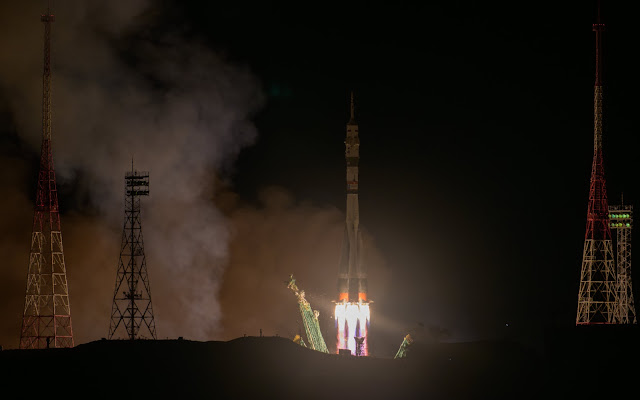Russian Soyuz Rocket Launch of Expedition 72 Crew | International Space Station
NASA astronaut Don Pettit, along with Roscosmos cosmonauts Alexey Ovchinin and Ivan Vagner of Russia, successfully launched aboard the Soyuz MS-26 spacecraft atop a Soyuz rocket at 12:23 p.m. EDT Wednesday, Sept. 11, 2024, from the Baikonur Cosmodrome in Kazakhstan. The trio completed a short ride to the International Space Station and docked at 3:32 p.m. to the Rassvet module before opening the hatches and joining the Expedition 71 crew in orbit, where they will spend approximately six months living and working in space.
NASA Astronaut Donald R. Pettit Biography:
https://www.nasa.gov/people/donald-r-pettit/
https://www.nasa.gov/humans-in-space/astronauts/donald-r-pettit/
Expedition 71 Crew
Station Commander: Oleg Kononenko (Russia)
Roscosmos (Russia): Nikolai Chub, Alexander Grebenkin (Russia)
NASA: Tracy Dyson, Matthew Dominick, Mike Barrett, Jeanette Epps, Suni Williams, and Butch Wilmore
An international partnership of space agencies provides and operates the elements of the International Space Station (ISS). The principals are the space agencies of the United States, Russia, Europe, Japan, and Canada. The ISS has been the most politically complex space exploration program ever undertaken.
Image Credit: Roscosmos/Natalya Berezhnaya (Russia)
Capture Date: Sept. 11, 2024
#NASA #Space #ISS #Science #Earth #BaikonurCosmodrome #Kazakhstan #SoyuzRocket #SoyuzMS26 #SoyuzCrewSpacecraft #Astronaut #DonPettit #UnitedStates #Cosmonauts #AlexeiOvchinin #IvanVagner #Russia #Россия #Roscosmos #Роскосмос #SpaceLaboratory #Expedition72 #HumanSpaceflight #InternationalCooperation #STEM #Education


















ESO-1080p.jpg)





